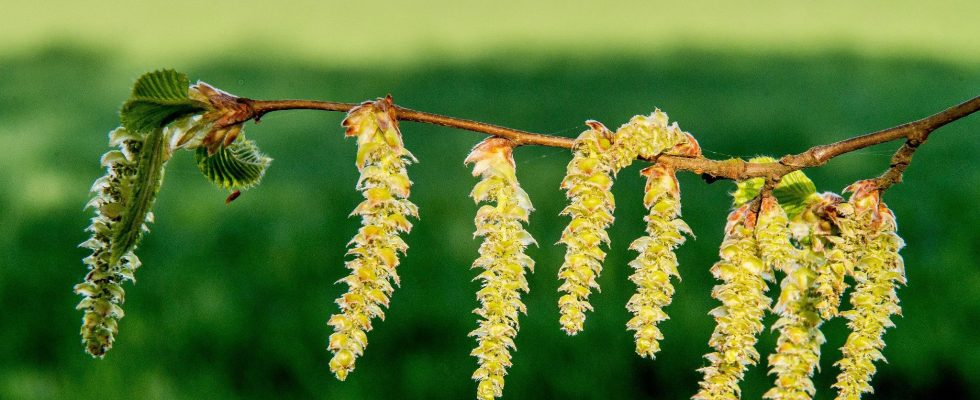The return of sunny days is also, for many, synonymous with allergies. More particularly those with pollens. This Friday, April 7, 2023, the National Aerobiological Surveillance Network (RNSA) placed half of France on red alert regarding the risk of allergy to several pollens. The other thirty-six departments are in medium health impact. “Pollen will bother allergy sufferers over a large northeast quarter of the country with a high risk,” the Network said in an updated statement. Runny nose, cough, itchy eyes… These symptoms affect 30% of people with allergies in France.
In question: birch pollen, which is very present naturally in the country. They have a high allergenic potential causing allergy sufferers to many ocular, nasal and respiratory symptoms. Birches are visible around the edges of many woods and forests and are planted in many green spaces, roundabouts, entrances to residences, etc. “Hornbeam pollens (which are from the same family as birches) and ash pollens are also very abundant in the air with a risk of allergy which will evolve between the low level and the high level depending on the departments”, takes over the RNSA. In detail, the western part of the country seems less affected. In Île-de-France and Paris, the association indicates a red alert for the month of April.
A variety of pollens
In addition to birch, other types of pollen are currently circulating in the air. Hornbeam pollens are also very present, if we look at the graph produced by the RNSA. In Hauts-de-Seine, ash is added to the equation. On the Val-de-Marne side and intramural Paris, oak replaces ash for allergies. Willow, poplar, oak and grass pollens are present in the West. Their allergy risk ranges from low to medium. And in the South? “The cocktail of pollen from Cupressaceae-Taxace… (cypress…), plane tree, oak and pellitory (Urticaceae) could raise the risk of global allergy to a high level during spring days”, estimates the RNSA.
“Some people can be allergic to a single tree, in which case the discomfort can last two or three weeks. But most people are often disturbed for months and suffer particularly between April and June, when the pollen peaks”, explained Sophie Silcet-Grieu in L’Express, end of February. The RSNA recommends that people with allergies follow their treatments carefully and avoid excessive exposure.
Among the advice to follow to limit the symptoms: rinse your hair in the evening, air your home early in the morning or late in the evening or do not dry your clothes inside. Outside, wearing a mask and sunglasses protects your mouth and nose. Once back, it is recommended to brush the clothes. In case of allergic symptoms, an allergist should be consulted.
Risks aggravated by global warming
How long will pollen allergy season last? The grain disperses more easily with the return of good weather and the wind. From the end of March to the end of April, birch pollen should therefore be present over a large part of the country. Concentrations will be high on sunny days. “During this period, episodes of atmospheric pollution can exacerbate the symptoms of allergy sufferers. Only the rain will be able to flatten the pollen on the ground and bring respite to allergy sufferers, but be careful because the respite will be short-lived and as soon as the sun and the temperatures will rise, the pollen will be out”, underlines the RNSA.
And the number of people allergic to pollen should not decrease. “With allergic diseases, we are facing a silent epidemic. 30% of French people are already affected and we could reach half of the population in twenty years to come”, indicated in June 2022, in L’Express, Professor Frédéric de Blay, president of the French Federation of Allergology (FFAL). Like most of his colleagues, the doctor observes an increase in problematic cases over time.
Although allergies are the result of multiple factors, several studies show that global warming increases the risks. In question: the rise in temperatures and CO2 which favor the multiplication of pollen. “According to simulations made by the RNSA, the effects of climate change on pollens are likely to increase in the future”, signaled a study published in 2018 by the Federation of Air Quality Monitoring Associations (Atmo France), the National Aerobiological Monitoring Network (RNSA) and the Association of Sentinel Pollinariums of France (APSF). French patients have not finished coughing.
